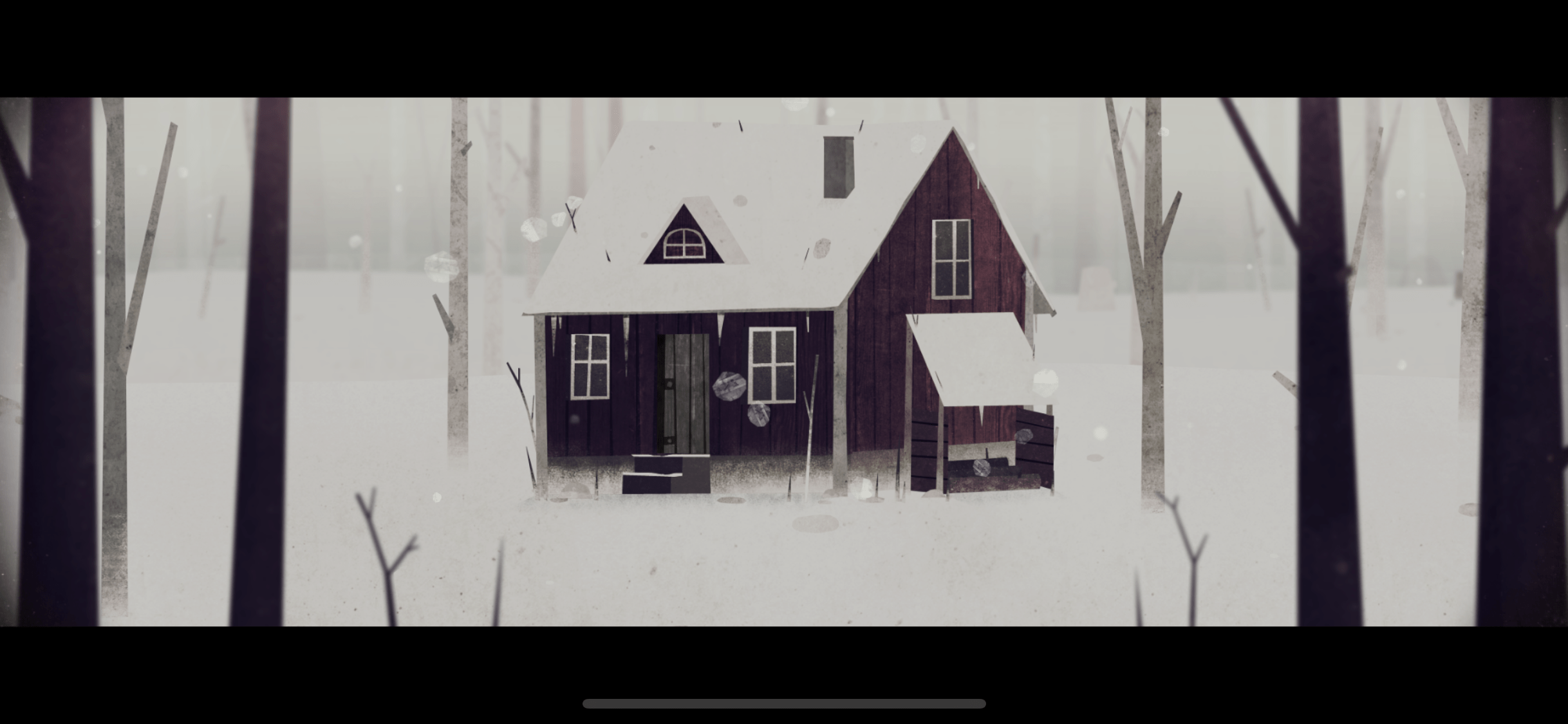For this critical play, I chose to play Year Walk, which was created by Simogo. I downloaded the iOS version of the game and played it on my iPhone. Year Walk is a narrative-based adventure game that centers around the Swedish tradition of walking through without food or water to reach a church and see the future. In this game, the player operates as the protagonist of the story, and moves through the game space to find clues and ultimately reveal whether or not they end up with a woman seen in the beginning of the game.
In many ways, Year Walk is similar to a walking game (it has walk in the name!), but the use of a story narrative and clues that, when solved, advance the story, adds dimension to the forms of fun presented in sensation, discovery, and challenge. The game itself opens with a Star War-style scrolling text introduction that explains what a year walk is.
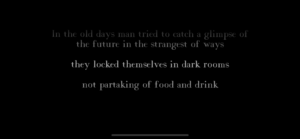
The most surprising part of this game was the fact that it opens with an empty, snowy space that you have to explore to reach the first narrative device. With a mystery-style game, I was expecting that there would be more exposition and explanation about the setting, but I think that this mechanic gives users a sense of control and autonomy while solving the mystery; it balances elements of emergent and embedded narratives.
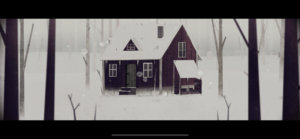
As a result, while exploring, you can come across pieces of information and landscape that aren’t immediately relevant to you. Often, I found myself wanting to write down observations and patterns—not unlike a “real” detective—because I wasn’t sure when they would be important for advancing the narrative. I did spend a significant amount of time running into dead ends and struggling to “walk” back to a certain location, so I wonder if the game could be improved by a source map that users could annotate with their findings.
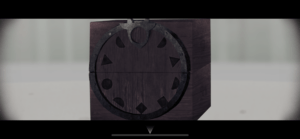
Interestingly enough, the title screen for the game doesn’t even appear until after you have had a dialogue with the protagonist’s lover. This mechanic underscores the importance of exploration to reveal pieces of narrative, and adds a sense that the story is much more complex than what is initially presented to the player.

The two images below are some of the first couple of clues that the player encounters.
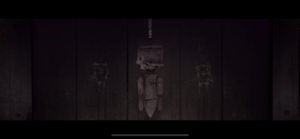

Interestingly enough, these clues employ mechanics that fully immerse the player in the story. In order to solve the first clue, you need to spin the doll’s head in order to access a walking pattern, and you need to listen to the woman’s singing to unlock another important code. Even though I had some issues with hearing the background sounds of the game, I thought these mechanics thematically fit what a year walk would have looked like, and I enjoyed the fact that they used symbols/figures from Swedish lore.
Overall, I really enjoyed playing Year Walk, and I would return to reach the end of the “walk” and see into the future. In my opinion, this game was less of a mystery and more of an adventure with clues to solve; I wasn’t sure what the final piece of the puzzle would reveal.


